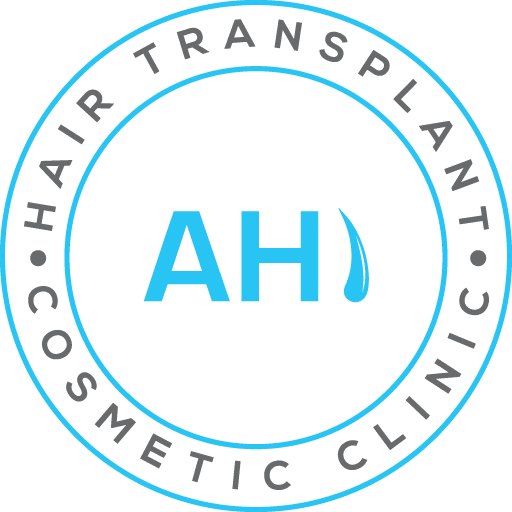What is Alopecia and what is the best Alpoecia Treatment in London?
Alopecia is the medical term for hair loss and is a very common concern among both men and women. It occurs when the usual hair growth cycle is disrupted which can be contributed to by a number of genetic, medical, behavioural or psycho-social circumstances.
AHI Clinic is situated in South Woodford and specialises in performing safe and effective treatments for restoring hair growth, Alopecia Treatment in London for both head hair and facial hair. When visiting the clinic Dr Waqas Chaudhary and his team will ask that all patients attend a private and confidential consultation, as exploring the likely reasons behind hair loss is key to recommending the most suitable treatment solution. The experts at AHI have undergone rigorous training and their medical knowledge on this sensitive concern is extensive. They have an in-depth understanding of the normal hair growth cycle, and the factors involved in causing different types of hair loss, including:
Androgenetic Alopecia
This term refers to the most common type of hair loss: male pattern baldness / female pattern baldness. In many cases it is hereditary, affecting around two thirds of adult males and up to 50% of women over the age of 65. With this type of hair loss, the affected person experiences a loss in scalp hair which often progresses gradually over a number of years.
Most men who develop pattern baldness could start to develop the symptoms some time after puberty, although the most common age for men to notice hair loss is around 30 – 40 years of age. As androgenetic alopecia runs in the family, and most men will look to their biological father or grandfather to get an idea if they too will be affected, it is often the maternal side that can be a greater influence. The way in which it develops (the ‘pattern’ it takes) can vary from man to man. However, male hair loss typically affects the top and sides of the head; forming a patch on the crown, or receding from the front hairline. Testosterone is a male, sex-related hormone that naturally converts to DHT (dihydronetestosterone), which also stimulates the hair growth cycle. The presence of testosterone is a key factor in the growth of beard, underarm and pubic hair, as well as playing a role in hair loss concerns. As levels of testosterone can decrease as a man gets older it is thought that this can be a contributing factor when hair starts to fall out. However, research has also shown that some men can have scalp follicles that are sensitive to DHT.
Female pattern baldness is often a much slower process than male pattern baldness. Women will typically experience an overall thinning of hair over the entire scalp, without seeing the usual hairline recede. Many female hair loss cases will see this concern start with the parting becoming wider, before thinning hair develops on the top and crown of the scalp. As with hair loss in men, it is also thought that genetics and hormones are contributors to this condition, as well as ageing, heavy blood loss during menstruation and side effects of certain medication. During the ageing process, scalp follicles can shrink and subsequently produce shorter, thinner strands – and in some cases the follicle becomes unable to produce a new hair. However, the follicles will remain active which means an effective treatment can help to stimulate healthy new growth.
Alopecia areata
This type of hair loss is more related to the immune system, whereby it attacks the hair follicles. The main symptom of this hair loss condition is the visible appearance of small, coin-sized bald patches on the scalp. The exposed area of the scalp is often very smooth, and can develop anywhere on the head. Alopecia areata is more common in teenagers and young adults, although it can affect anyone at any age, both male or female. In most cases the symptoms are temporary and within a few months, the hair will start to grow back. However, it is likely that another bald patch / patches will appear on another part of the head. Although there is no known cure for this form of alopecia, some people find that it resolves on its own as they get older, and it is uncommon for more advanced balding to develop as a result. Alopecia areata is a condition that is commonly experienced on the scalp, however, it can also affect hair on the face or body.
Alopecia barbae
This type of hair loss is more commonly known as ‘patchy beard’ and is usually a male concern. Like alopecia areata, hair loss affecting the beard can develop small, round, bald patches among the growth of facial hair. The loss is often sporadic, however, in some cases it can develop across the whole of the beard area. The cause of alopecia barbae is more commonly linked to stress and anxiety (compared with other types of hair loss), and often responds to a more relaxed lifestyle.
Traction alopecia
Traction alopecia is a concern that affects scalp hair. It is caused by stress or tension on the follicles, often when the hair is pulled back tightly. Traction alopecia is often the result of continuous tension on the follicles when a certain hairstyle is worn frequently, such as when those with long hair put it in a pony-tail or tight braiding on most days.
When the hair starts to expel, it is the result of damage to the follicles which then become unable to produce a new strand of hair. This usually takes some time to develop, and most often affects the frontal hairline. In many cases, a person will also experience: itching, broken hair, redness or folliculitis before thinning hair or hair loss starts to appear. Changing the hairstyle can help to prevent further damage to the follicles and people will often respond well to treatment, if the condition is not too advanced.
Telogen effluvium
Telogen effluvium is a common hair loss condition that is mainly associated with stress and tension. Most people will expel between 30 and 150 hairs from their head and body, which is normal and is an important part of the hair growth cycle. When a person is affected by telogen effluvium they can start to notice an unusual amount of hairs being expelled as an increased amount of hair has shifted from the growing phase (anagen phase) to the shedding phase (telogen phase). Commonly, around 10% of all scalp hair is in the telogen phase, however when a person is affected by telogen effluvium, it puts around 30% of all scalp hair in this phase. High levels of stress and tension can be caused by: a demanding lifestyle, loss and bereavement, pregnancy, childbirth, the menopause or an underlying health condition, which causes a disturbance to the usual hair growth cycle. Other contributing factors to consider can include: poor diet, certain medications, recreational drugs, significant / sudden weight loss and undergoing surgery.
Hormones are key in the growth of hair all over the body, as well as being the main influencer when hair growth starts to become thin, or begins to fall out. However, there are additional factors that may need to be considered, and can influence hormone levels.
AHI Clinic treats many different types of hair loss.
Each case is approached from an individual perspective and recommending a treatment is based on the person’s specific concerns, and possible cause. The right Alopecia treatment in London can help to restore fuller hair growth, which is naturally yours.
To view our range of hair loss treatments, visit our newly designed website www.ahiclinic.co.uk and contact us for a consultation.








